Search Posts
Recent Posts
- Outdoors in RI: 138th Arbor Day, Princess Kate and access to nature, Winnapaug Pond, Vets fish April 18, 2025
- Saving lives, Paul Rego donates his 100th gallon of blood at the Rhode Island Blood Center April 18, 2025
- Rhode Island Weather for April 18, 2025 – Jack Donnelly April 18, 2025
- National Financial Literacy Month. BankRI offers free, virtual workshop: “Smart money moves… April 18, 2025
- GriefSpeak. Technology in Death and Grief – Mari Nardolillo Dias April 18, 2025
Categories
Subscribe!
Thanks for subscribing! Please check your email for further instructions.
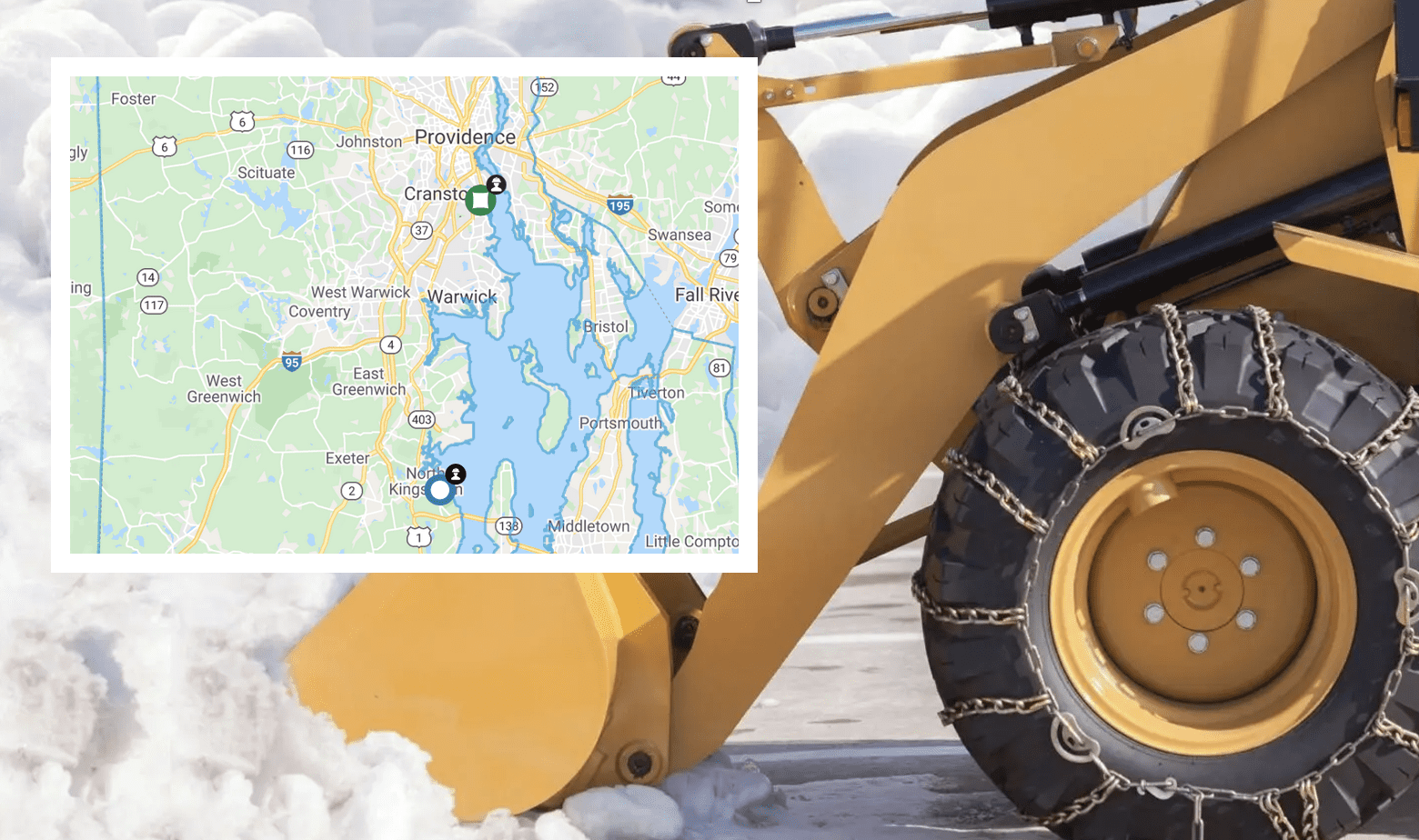
UPDATED: “Wicked Big” Snowstorm (aka, Bomb Cyclone – Snowpocalypse, Bombogenesis) is here.
by Nancy Thomas
This is a developing story…and will be updated throughout the storm.
Bomb Cyclone – Snowmageddon -Snowpocalypse – Bombogenesis. What’s the definition? Think of it as a snowstorm with hurricane power. That about says it and at this point ALL forecasters are in agreement. If you drive (and just don’t until at least mid-morning or later on Sunday), you’ll see the signs from the RIDOT – “Wicked big snowstorm” – believe the prognosticators – the percent probability of correctness is pretty high that this will be a snowstorm to remember and talk about.
The snow should be light and fluffy – and as much as 2-4 inches PER HOUR. Drifts will make it look higher than it is – because if the drift is in front of your door, it WILL be higher than the accumulation totals. Editor’s note: this sounds like the storm where my across the street neighbor’s driveway is clear and my side door can’t even be opened.
Totals in Boston and north are expected to be the highest, well over 24″ – the record in Boston is 27.6″.
Make plans for getting rid of it! Who is going to shovel this? You? Not you? Shouldn’t be you? Then call your neighbors who use a plow service and ask for help getting on their list – call your landscaper – some of them will plow in the winter. Try calling your city and town – NOW – and see if their Senior Center has a list to sign up on for help with matching seniors and volunteer shovelers. Central Falls has a list – other cities may, too.
RIEMA suggests the following preparedness tips to Rhode Islanders. While these tips are for doing when there is “NO” emergency, and we have a possible blizzard right on our doorstop, we hope they are helpful for now – or the next time.
Snowdrifts are expected to be as high as 6 feet in some parts of New England. Winds could become a danger to electric lines and people may lose electricity, and therefore their heat, and methods of communication.
Updated information:
Gov. McKee has declared a state of emergency in Rhode Island – Blizzard warnings are in effect for 11 million people from coastal Virginia to eastern Maine.
Gov. McKee will hold a briefing at 9:30am today
When in doubt, assume everything is closed on Saturday. No RIPTA service. No Block Island Ferry. Amtrak, no service between Boston and New York. Bally’s Casino in Lincoln & Tiverton will close 1am Saturday – and reopen on Sunday if conditions warrant. Airport flights in and out are canceled until notification changes that. RWP Zoo is closed. All libraries are closed. Most restaurants are closed. Usually, select drug stores, particularly chains such as CVS will try to stay open, but call first. Do not expect delivery services to be running – they are people, just like you and me, in their cars or SUVs, and should NOT be on the road.
City of Cranston reporting “50 city trucks and 90 vendors all set ready to go”, per Mayor Hopkins.
Warwick has 50 trucks ready to go, per the mayor.
Pawtucket has 70 trucks ready to go, per DPW.
Providence has about 110 trucks and pre-sanding/treating already took place.
State – RIDOT has 50 snowplows and 350 private vendors
Following the storm, property owners have the legal responsibility to clear the sidewalks in front of their home/business. Can’t stress this enough – if you can get in and out of your business or home but no one an walk in front on the walkway, then you have a set number of hours to figure out how to clear that snow.
From the Union Fire District, So. Kingstown:
- Don’t leave the house without the following: A fully charged cellphone, car charger and an emergency supplies kit in your car. Ensure your kit includes additional layers of clothing and non-perishable food.
- If your car gets stuck during a storm, stay in the vehicle. If you leave your vehicle, you will become disoriented quickly in wind-driven snow and cold.
- Residents are also asked to assist firefighters by clearing snow away from fire hydrantsduring and after the storm. Snow should be cleared 3-5 feet all around the hydrant so firefighters have enough room to connect a hose.
WARMING CENTERS – TY to Deb at RI Elder for the information:
24 hour warming centers are open at Crossroads, Emmanuel House, and Providence Rescue Mission (Contact directly). Also, CCA is offering a temporary space in Woonsocket for this storm (access is through CES). Please share this information with your networks. Additional warming centers can be found here.
Forand Manor (Community Room) at 30 Washington St, Central Falls, all weekend (9am – 9pm). – per Mayor Rivera will be open as a warming center.
Medical workers needing to get to work – nursing homes, and other facilities are encouraged to hold over staff – state police will not be able to provide routine transportation for workers needing to get to work – but use 211 for specialty cases which will be decided on an individual basis.
___
Power outages – report to National Grid – 800-465-1212 – see interactive map of outages, here: https://outagemap.ri.nationalgridus.com/
___
Gem Plumbing reminds us: Clear snow away from your heat exhaust vent to prevent system damage and the buildup of carbon monoxide in your home. Keep snowbanks from building up against your house. They add: Have some activities like board games, coloring books, or a deck of cards!
Outdoor generator? Make sure you keep the area need the vents clear of snow and ice – that is usually the side of the device with a light on, but make sure the entire area around the generator is clear of snow.
Here is the RIEMA suggestions, from their website:
• Make an emergency supply kit for your home and vehicle. (see below)
• Practice your family emergency communications plan – or make one now!
• Check on elderly family, friends, and neighbors to make sure they are properly prepared.
• Make sure you can heat at least one room in your home if your power or furnace is out.
• Do not use your fireplace, if it has been a long time since it was inspected, if you don’t really know how to use it. Do not burn anything in your fireplace but wood.
• Is your home is properly insulated. Caulk and weather-strip doors and windows to keep the cold out. • Insulate pipes to keep them from freezing. Put towels or rolled up cloth on windowsills to keep drafts at a minimum.
• Know how to shut off your water.
• Make sure your car tires have some tread on them and consider installing winter tires.
• Be aware of parking bans in your community.
• Talk with your employer about winter weather policies and procedures.
RIEMA Director Marc Pappas says, “…we encourage families and businesses to prepare now, before [the] storm strikes.”
Colonel James Manni, Superintendent of the Rhode Island State Police, is reminding all motorists of some driving safety tips and reminders. Following these basic tips and reminders can assist in ensuring the safety of motorists during snowstorms. The Rhode Island State Police is committed to working collaboratively with the Governor’s office, RIDOT, and EMA to provide the highest level of public safety during weather related events.
• Remove all snow from your vehicle before driving. Failure to do so creates a hazard for you and others. It’s also a violation of state law, carrying an $85 fine. • Wear your seatbelt. It’s your best protection, in the event of a crash.
• Turn on your headlights. (State law requires that if your windshield wipers are on, your headlights must be on, too.)
• Slow down and allow extra distance between your vehicle and others. Even four-wheel and all-wheel drive vehicles lose traction on snow- and ice-covered roads.
• If your vehicle goes off the road or is involved in a crash, call 911 and stay with your vehicle – if it is safe to do so – until help arrives.
“The safety of the traveling public is our highest priority at RIDOT, and we work throughout the year to improve our winter storm response,” Rhode Island Department of Transportation Director Peter Alviti, Jr. said. “We ask motorists to do their part by reducing speed, not passing or crowding plows and avoiding distraction.”
More things to do or remember or, hope, by the time you read this, that you’ve done:
1. Fill your gas tank in your car.
2. Buy ice melt – if you cannot find it, cat litter can do in a pinch, but will also track into your house.
3. If you park your car in the driveway, back it in so you won’t have to back it out with snow blocking your vision. Take your shovel and car snow scraper INSIDE – with high drifts you may have to shovel your way OUT of your house – and INTO your car.
4. CASH – Keep cash in the house – this most likely will be the kind of shoveling that you will need to pay for help for neighborhood youth or a plow service. Cash is king in emergencies.
5. Remember, your car is an electric source – you can go in to warm up – and charge your cell phone – make sure if you do that you clear your tailpipe area on the outside of the car and keep the window open a crack as well.
6. Keep your exit doors clear enough of snow to be able to leave your home if you need to – drifts are expected to be as high as 6 feet. This may mean opening the door and shoveling every 2 or 3 hours.
7. Buy some food that is non-perishable – tuna, beef stew, etc. Put a few bags of ice in the fridge in case you need to fill a cooler for your most perishable things to last a few more hours.
8. Find the extra warm clothes and put them out in one area – if it’s dark and cold you won’t want to be searching for the best warm socks, undershirts, sweatshirts, hats, etc. Do the same with blankets and quilts – pile them up and let everyone know where they are.
9. Pets!! Get your pet food ready – make sure you have a can opener, in case an electric one can’t be used. Make sure there are extra blankets in their dog/cat beds, too. Pets get cold way before we do. And if they will need to go out, keep that special area right outside the door shoveled clear for them.
10. The basics – flashlights, candles, matches, and our favorite – battery operated candles (so much safer).
11. Medications – prescriptions for a few days – tylenol, etc. Get them now.
12. Food – Refrigerated foods will last about 4 hours without electricity. There are foods to have such as peanut butter and jelly, canned tuna, beans, most vegetables, etc. to have on hand – and items from the bakery aisle – breads, danish and nuts, popcorn, etc. If you can’t live without coffee from your electric coffee maker, make up about 8 cups and put it in the refrigerator – you can have ice coffee for awhile. Grab a box of non-dairy creamers (like the ones you get in restaurant diners), too. Here’s some ideas from Consumer Reports on foods to make without refrigeration: https://www.consumerreports.org/emergency-preparedness/what-to-feed-your-family-when-the-power-is-out-a4425760304/. We’d normally suggest using your outside grill, but this storm might just be too deep for any of that.
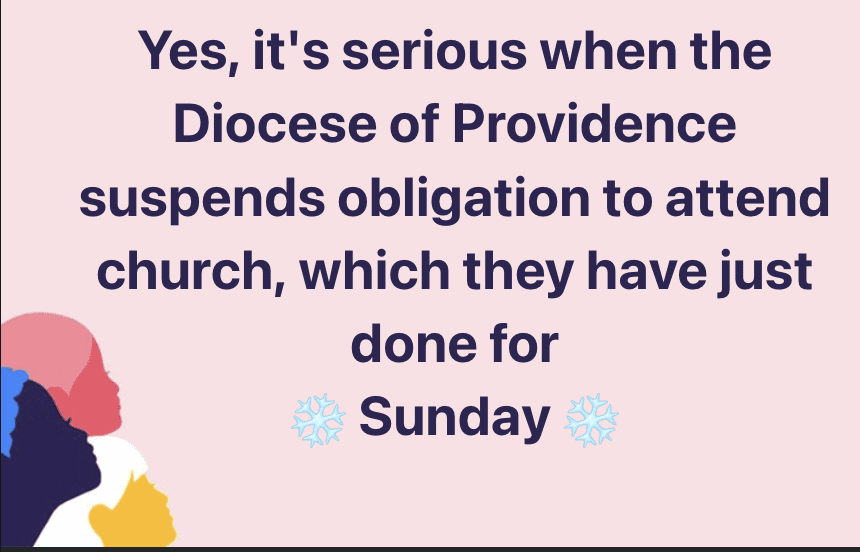
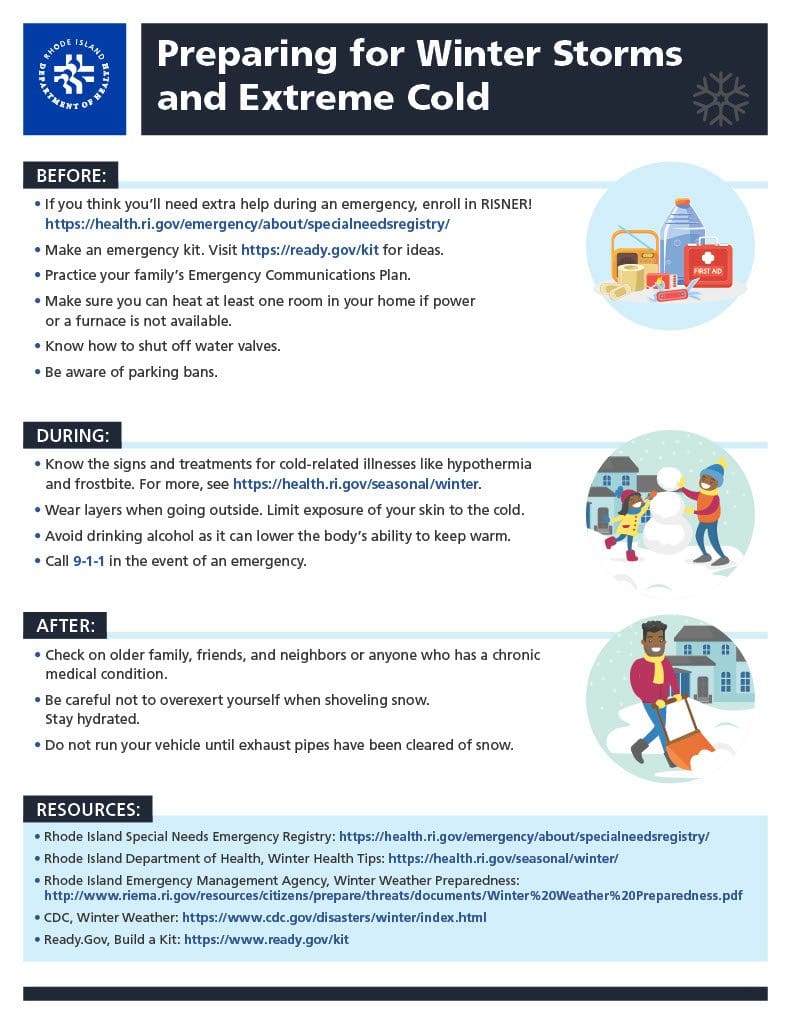
Prepare your Disaster-Supply Kit – here’s RI’s Checklist:
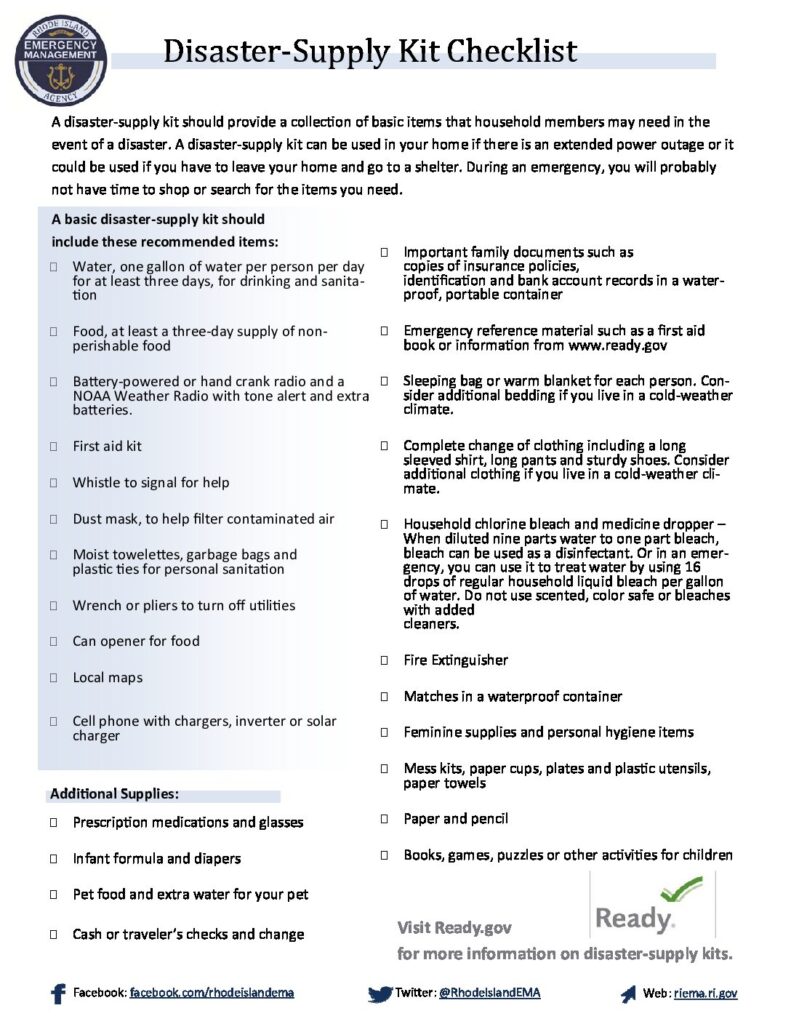
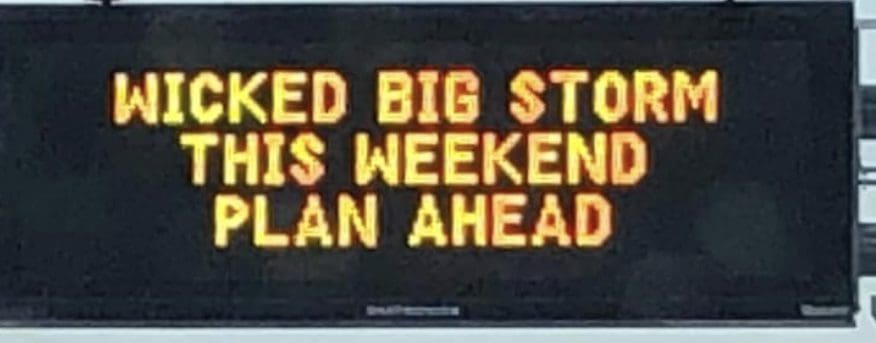
If you think of something we should add to this list – email us at: [email protected] – it’s everyone helping everyone time – and together, we’ll get to the other side safely.
